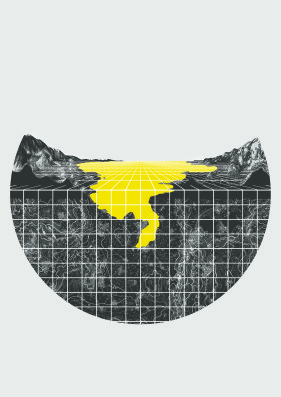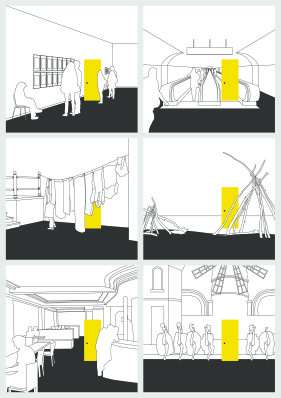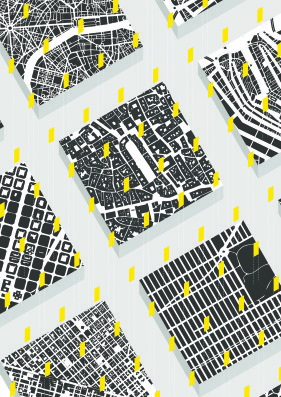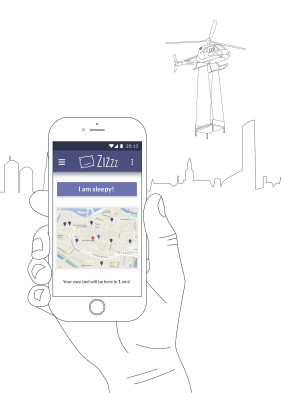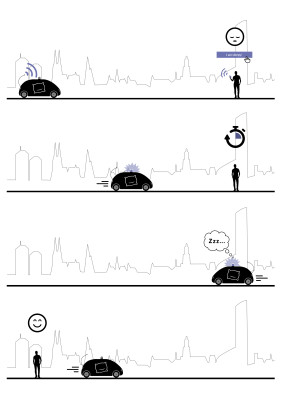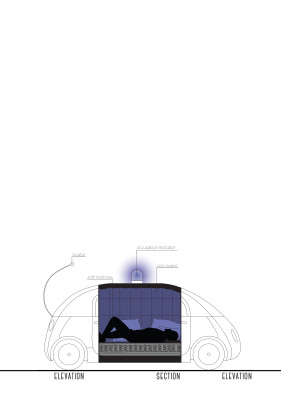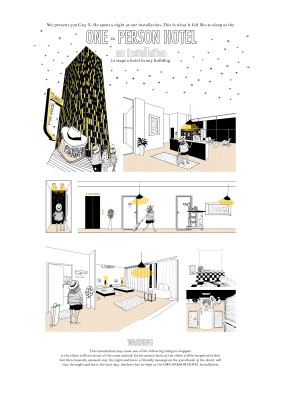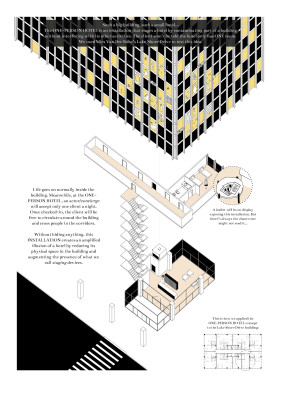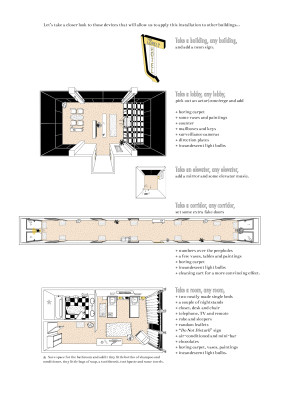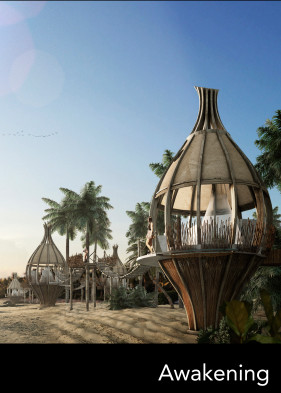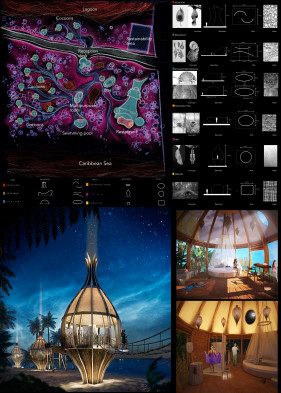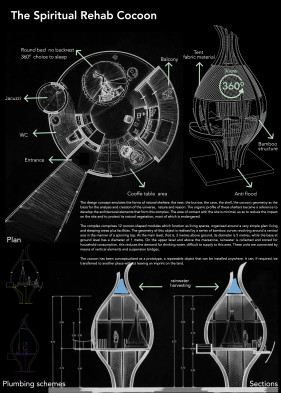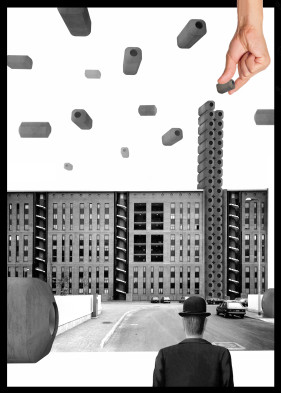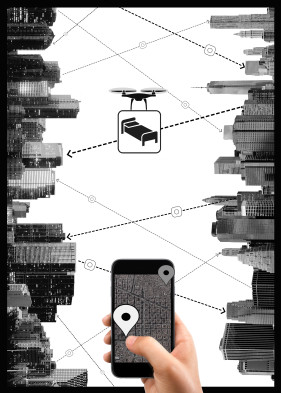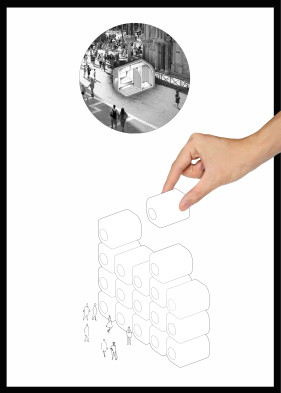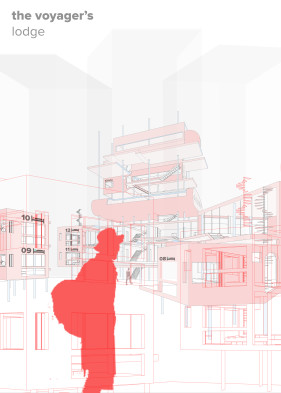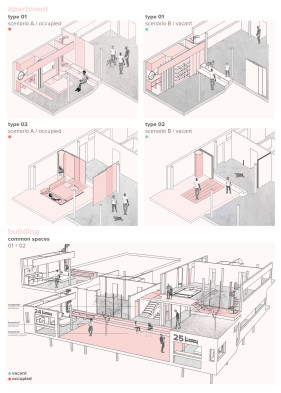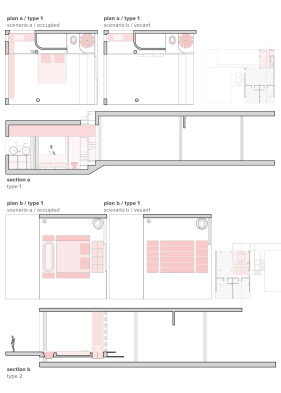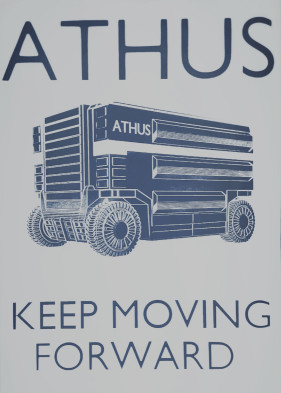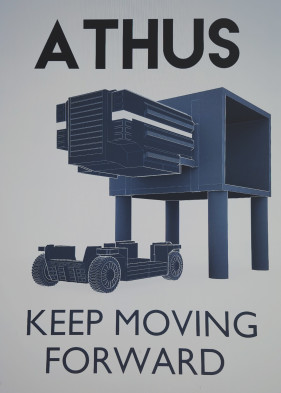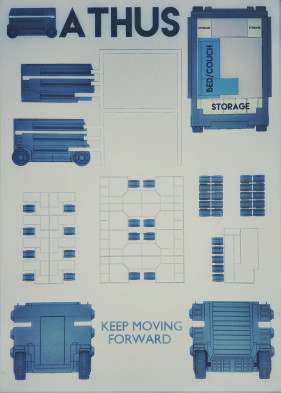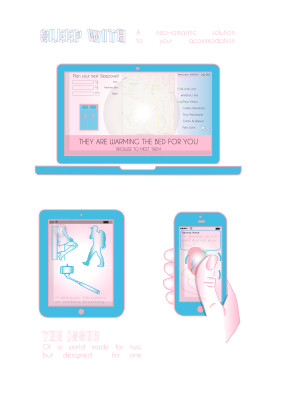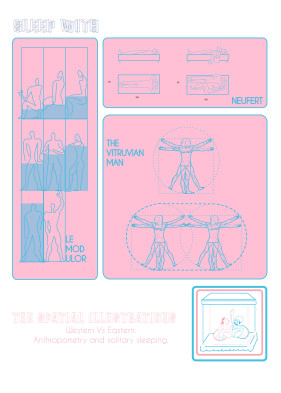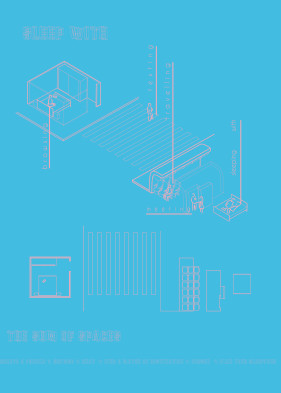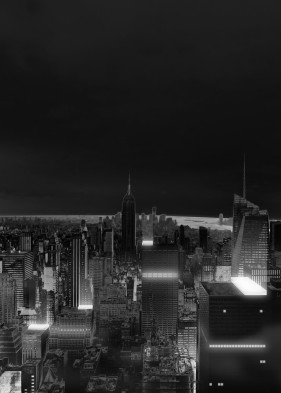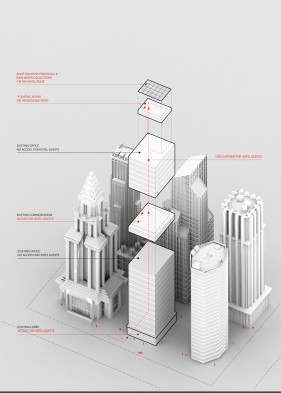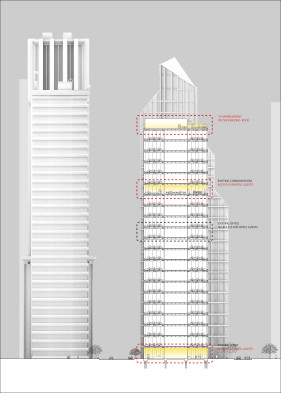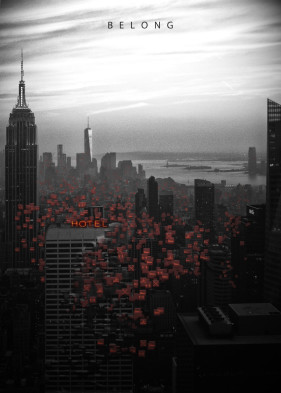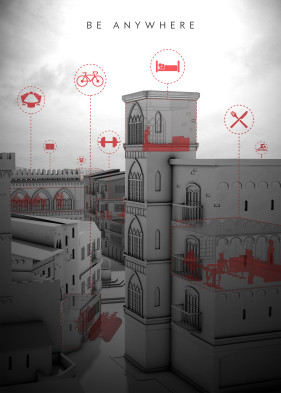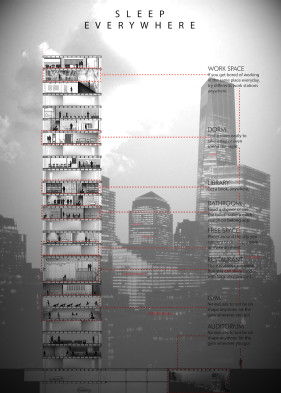TEAM: Joy Younan, Rachid Jalloul
“I just arrived and I want to sleep… somewhere”
Bedroom, bathroom, kitchen, living, dining… and a voyager’s lodge. New times call for new functions. This is a 21st century typology. Every residential apartment today should be equipped with a lodge for a traveler or city wanderer.
Just like an attic for storage, a lodge for a traveler.
“On a building I see a bed icon lighting green… a vacant lodge”
The lodge is a convertible room. Presented are two possible types: Type 1: 5 by 6 meters completely isolatable from the residents’ quarter:
Architecturally autonomous:
Protruding out of the apartment, 60 cm lower in level
Separable from its interior via sound proof sliding panels
Has a separate entrance. The occupant does not have to pass through the apartment to access the lodge.
Programmatically independent, contains:
Bed
Shower
WC
Kitchenette
Storageunits
Bicycle
Spiral staircase that can lead to the lodge of the apartment above incase it exists
All of the functions mentioned above are embedded in a 135cm service-wall-closet, with the bed being retractable.
Once the lodge is unoccupied, it can be joined with the rest of the apartment. The bed can be retracted to become a shelf, functions in the service wall are concealed via shutters.
Type 2: 5 by 6 meters including a 2 by 5, isolatable – but not completely – from the residents’ quarter:
Architecturally accentuated:
Overlapping with the apartment. Elevated by 60cm.
Separable from the rest of the interior via soundproof sliding panels o Accessible via its balcony
Programmatically dependent, contains: o Bed
Bathtub
WC
Storage unit
All of the functions mentioned above are embedded in a 30 to 40cm thick service-slab.
Once the lodge is unoccupied , it can be reclaimed to the apartment. The functions in the service- slab can be concealed via shutters as if nothing was there.
The two types or more can be joined in a building with common spaces linking them to create a traveler’s/voyager’s environment.
Fundamentally, a hotel is a typology that emerged out of the concept of hospitality and it created a business out of it.
The Voyager’s Lodge is a project that revisits the concept of hospitality and suggests a new typology. How the building looks like is not as important as the feature itself, for it can become an inseparable feature and requirement of apartment buildings to be constructed.
Slowly, when this typology spreads – internationally – hosting can become a worldly custom and sleeping in strange land can become much more accessible.
With that being said
Notions such as booking,
Checking in
And even paying can slowly fade away, For wherever anyone trots,
There is a place to stay

